Boost Your Golf Swing Power Instantly with These 8 Game-Changing Techniques


Table of Contents
Key Takeaways
- To increase our golf swing power, we need to focus on our grip, posture, and angles. When mastered, these elements will allow us to obtain more power, accuracy, and ultimately distance control.
- Practicing these better weight transfer and ground reaction force principles allows us to create greater energy and repeatability with every swing.
- It’s pretty simple — increasing core and lower body strength is the best way to increase our swing power. Releasing tension through flexibility and mobility is just as important in maintaining that power.
- Selecting the right equipment, such as matching shaft flex to our swing speed and using properly fitted clubs, can further enhance our performance.
- When we add specific drills to our practice routine, we can work on fixing problems in our swing. This drill conditions us to build explosive swing speed as we age.
- Avoiding common mistakes like poor sequencing and trying to muscle the ball ensures we maximize our swing power efficiently and safely.
We create more stored energy in our golf swing power because we are using dynamic, powerful body movement. We’re really working to develop that optimal grip and a good follow-through.
We achieve more power by rotating our hips, relaxing our arms and extending our feet down into the turf. We align our stance so our feet are parallel with our shoulders.
It’s not just our arms—we engage our core to inject added speed and punch through the swing. Moving fast hands at the back of the swing will ensure that the club is moving hard through the ball.
We look for little habits that are dragging us down, such as rigid wrists or locked out shoulders. In this guide, we walk you through the proven steps and drills that enable us to consistently add power to each and every swing.
Why Swing Power Matters More Now
Golf is a different animal than we’ve seen in years past and swing power is more essential than ever. When we increase the swing power behind our shots, our ballistics reach new distances. This allows us to get to greens in less strokes and provides a significant advantage, even on difficult courses.
This isn’t only applicable to the professionals. Especially at their scale, a few additional yards can tip the balance between victory and defeat. Even the top golf pros want to hit it farther. They frequently imitate the big bombers such as Paul Azinger by gripping down hard to hit those mammoth tee shots.
Tiger Woods, Brooks, and Bryson all use the interlock grip. This swing grip will prove particularly useful for power hitters looking to gain extra power in their swing.
As alluded to in our analysis of more than a million swings, the position of the wrist at impact really matters. A stable, unbreakable wrist provides better control and a firm grip engages your core to load up an impressive blow.
To shoot the best score for most of us, following a Nicklaus approach is less complicated and more effective at helping us hit shots where they need to be. Short-hitters often arch themselves forward 25–40% more at the apex of their swing than big hitters.
This additional bend diminishes their power and increases the difficulty of getting the ball out there on the fairway.
Foundational Setup for Maximum Force
Creating foundational power in my golf swing power begins with proper setup. Proper setup allows me to swing with maximum force while still maintaining control. By ensuring proper grip, stance, posture and ball position, I was set up for a powerful shot each and every time.
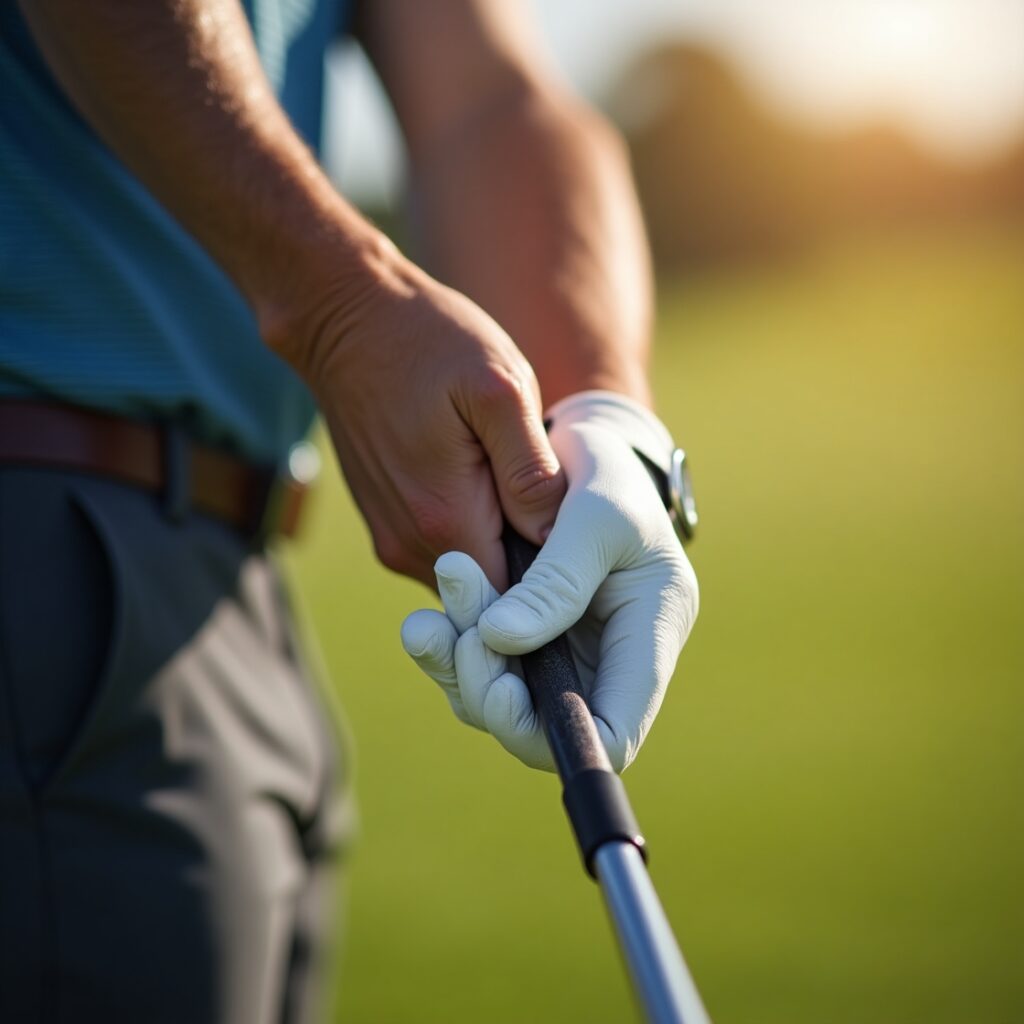
Even small improvements to these factors allow me to achieve much greater increases in force and distance.
- Grip: Hold the club with steady pressure—firm but not tight. I use my right-hand third and fourth finger, and my left-hand last three fingers, to hold the club wrapped.
Using the interlock grip, which connects my index and pinkie fingers, increases power and stability for most golfers.
- I stand with my feet just wider than shoulder-width apart. Having a wider stance allows me to feel more balanced, which in turn allows me to rotate more and shift my weight better during my swing.
- I keep my spine tilted forward slightly, with my back straight but relaxed. This helps to load my shoulders and hips so they can turn back as far as necessary.
Perfect Your Grip Pressure
The reason is, maintaining a light grip allows independent wrist action, which in turn increases clubhead speed. For short shots, my grip is even more relaxed.
On the open road, I place a firm but not stiff grip. I gauge grip strength at the practice range, and with a few drill variations, maintain consistency swing after swing.
Optimize Stance Width and Stability
A strong, solid stance gives me a solid foundation. When I’m hitting a driver, my stance will widen just slightly to maintain balance.
I just do squat lunges to take my legs strong, so when I do swing hard, it’s easy. I personally still prefer to line up my feet with the target.
Angle Spine Correctly at Address

I don’t bend my spine so much as lean into it to accommodate a complete backswing. I use a mirror to monitor my positioning; it really helps with muscle memory.
Maintaining my spine neutral prevents injury and allows me to generate maximum force through the ball.
Position Feet for Rotation
My feet are just toed out enough that my hips can rotate. I do have to monitor my weight to get it evenly distributed over both feet.
Little timed drills with slow swings allow my body to get the muscle memory down with proper footwork.
Tee Ball Higher Strategically
I raise the tee for my driver to get under the ball. For my irons, I go lower.
I do adjust tee height when it’s windy or the turf is mushy.
Unleash Your Engine: Core Power Mechanics
Creating swing power starts with understanding which aspects of our anatomy perform the primary tasks. So much of our swing is based on our lumbar area and torso as well as our hip usage. Combined, they are responsible for almost 71% of the engine’s power.

Legs provide an astounding 2 ½ horsepower. Hips are a big driver, especially at the start of the downswing. Arms are responsible for a little more than one horsepower boost on their own. The real magic is in opening up to using our lower body and core!
Here’s a closer look at the building blocks of core power mechanics:
- Ground reaction forces through the legs
- Smooth weight transfer
- Strong shoulder and hip turns
- Stable head position
- Leading with the lower body
- Working with biomechanics
- Sequencing each movement
- Bracing the lead leg at impact
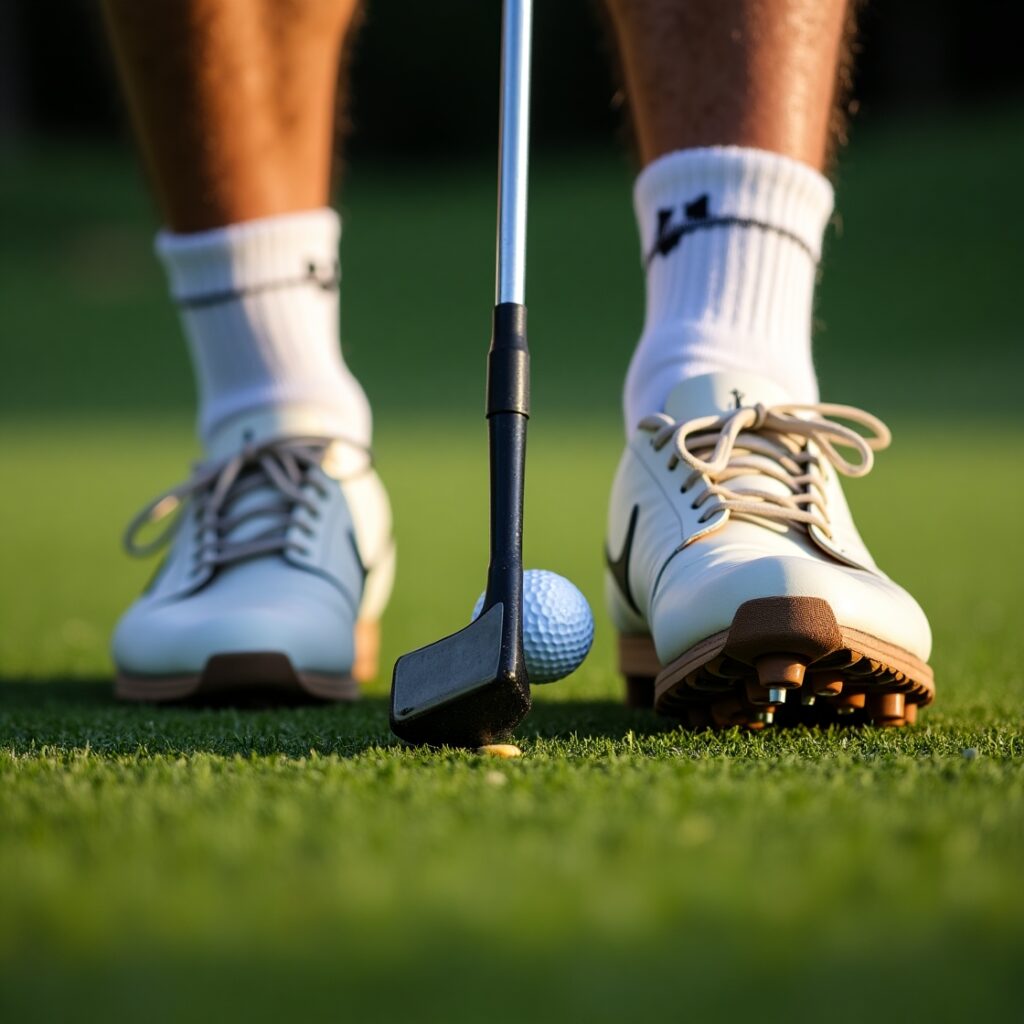
1. Harness Ground Reaction Forces Effectively
When we drive down through our feet, we arrest ground reaction forces. Drills, such as squats or step-ups, allow us to tune into and utilize this force.
Solid footwork—feet firmly planted with balanced pressure—allows energy to travel up the body and into the golf club. Observing our foot strike in slow-motion video is an excellent way to determine if we’re making proper contact with the ground.
2. Master Weight Transfer Sequence
The perfect swing transfers weight from our rear foot to our lead foot. We use slow committed practice swings to get a sense of this move and to get a sense of our balance.

More importantly, their stepping drills teach us how to time the shift so we don’t lose power. A swing review is a great way to identify if we’re leaving power on the table.
3. Maximize Your Shoulder and Hip Turn
Shoulder and hip turn work with bands or a medicine ball really helps to open up our swing arc and strong arc in general. Hip and shoulder stretches allow us to achieve a deeper turn.
We monitor our turn through a mirror or video to see if we’re getting the most out of our range.
4. Maintain Stable Head Position
By not moving our head, we are getting that better contact, better accuracy. We use putting drills or practice swings with a tee under our chin to help paint that picture.
Excessive up and down head movement can rob the power out of our cut.
5. Lead Downswing with Lower Body
Starting the downswing with our legs and hips provides the most explosive power. Leg-initiated drills allow us to be inspired and reminded to act from the ground up.
We all know that tracking the beginning of our swing in video can help us see if we’re starting out in a proper lead position.
6. Understand Biomechanics Role in Power
By understanding the mechanics of our joints and muscles, we can identify where power is escaping. Video analysis tools, or even slow motion phone apps, present a real-time window into our posture and sequence.
We strive to keep our movements simple and straightforward, in line with the body’s most effective function.
7. Sequence Movements for Peak Speed
By breaking the swing down into stages, backswing, transition, downswing, it’s much easier to ensure each piece stays in sync. Warm-ups such as pause-at-the-top or step-throughs help develop a sense of rhythm.
Using video footage to track our movement allows us to identify when our movements are out of sequence.
8. Brace Lead Leg Through Impact
A stable, strong lead leg will allow us to have a great foundation in the moment of truth at impact. Basic body weight resistance techniques, such as lunges, develop that foundation leg.
One of the first things we check is where we’re standing at the point of contact. This keeps us very stable on our lead leg, allowing us to keep our power.
Advanced Swing Dynamics for Speed
Advanced swing dynamics allow us to extract more out of our golf swings. By applying these proven drills and intelligent practice, we feel the real gains in swing speed and distance. Our focus is on the technical details of every single swing.
Along the way, we develop the quality of the movement so that it is dynamic and fluid. These steps don’t just apply to weekend golfers—they’re effective for seasoned players, too. For us, progress looks like doing the heavy lifting and holding our comfort-level habits to the light of real world case studies and outcomes.
- Create maintains swing width by hitting with two alignment sticks and monitoring arm extension.
- Create lag by maintaining the wrist angle until later in the downswing.
- Train your wrist hinge timing with slow-motion swings and video feedback.
- Improve your sequence from the backswing to the downswing for consistent speed.
- Combine strength-building workouts for the core and legs with the swing itself to build power.
Create and Maintain Swing Width
We have lots of drills, swinging with sticks, that groove the feel of keeping our arms wide. This prevents us from allowing our elbows to fold in, which robs us of power. We hold our arms up, check our elbow, and find we get a lot more zip on our shots.
When we widen our swing arc, we start hitting the ball farther and it’s not even close. My buddy swings 106-108mph, arms long through impact and routinely carries the ball 265.
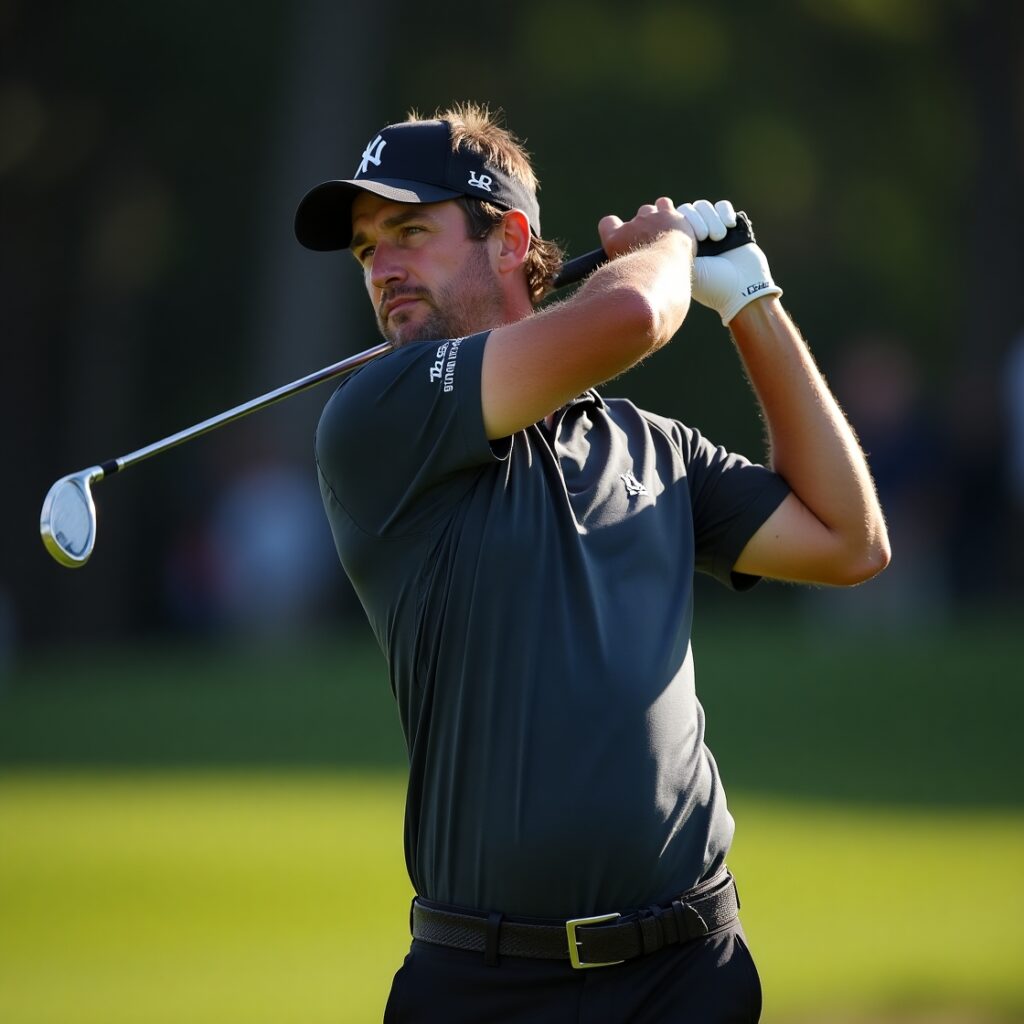
Develop Effortless Lag Power
When we see professional swings, we think in slow motion. We can see how lag keeps the club behind, creating that whip through effect at the last moment. Drills that get us to create lag and get that feeling of the clubhead trailing significantly increase our clubhead speed.
In the sense that we don’t try to put our thumb on the scale, we want the lag. Pros who do this properly, such as pros with an L at the top of their swing, maximize distance and consistency on every shot.
Achieve Optimal Wrist Hinge Timing
Through the use of video, we can identify the role of our wrist hinge and correct the timing. Drills with stops allow us to focus on hitting the snap. Correctly timing the wrist hinge releases all that pent-up energy in our swing.
By doing so, we see the ball fly off the face with tremendous speed.
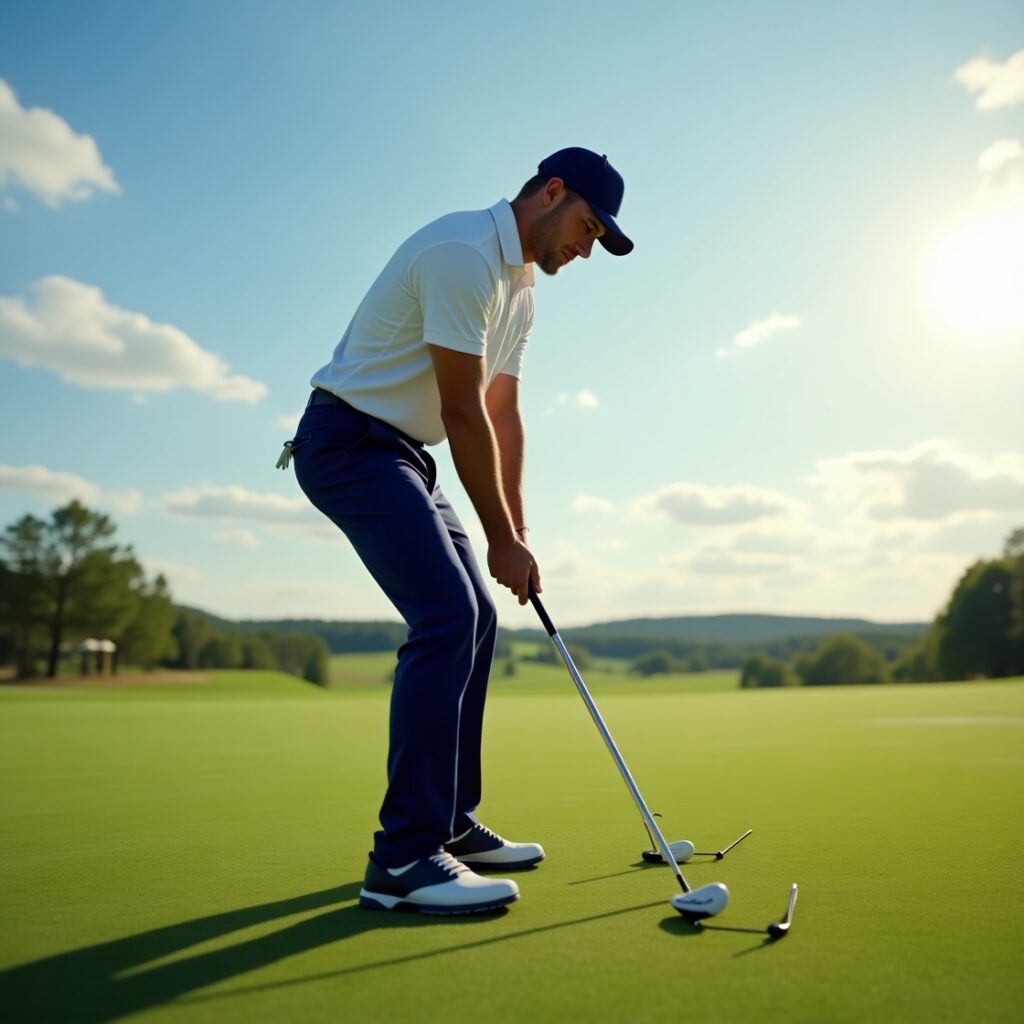
Smooth Out Your Transition Phase
We coach the transition from backswing to downswing to ensure a smooth golf swing. Incorporating drills that slow the initiation of the downswing helps maintain rhythm and prevents an early jerk, allowing for a nice, big arc that leads to effortless power at impact.
Build a Power-Focused Body
Creating power in our golf swing begins with a stable, mobile body. The majority of the power and speed largely derives from our lumbar, thoracic spine and hips. Combined, these account for roughly 71% of the total power in a swing.
Here’s what we focus on to help our muscles work together and make every shot count:
- Planks and side planks for core
- Russian twists and cable rotations for rotational strength
- Squats and lunges for legs and hips
- Deadlifts for lower back and hamstrings
- Yoga or Pilates for flexibility
- Dynamic stretches and foam rolling for mobility
We build strength initially, then progress to power and then incorporate speed. When we understand and master each phase, we strike the ideal balance to create a more powerful swing foundation.
Our shoes—particularly our golf shoes—are important. A larger base and natural grip allow us to stay plugged into the earth and turn with more angle.
Target Core Strength Training
Core training primes our swing for genuine power. We incorporate moves such as cable rotations, medicine ball throws, and banded twists to target those core muscles deep.
Rotational movements, rather than just crunches, prepare our bodies for the true dynamic motion of the game of golf. We monitor our progress by gauging whether our swing is beginning to feel more balanced and fluid.
Enhance Lower Body Power Output
Better legs and hip = stronger drive. Squats, lunges and deadlifts are staples. Plyometric box jumps and jump split squats develop that explosive force, similar to that of Tiger Woods pulling his left leg straight at impact.
With each shot we film our lower body, ensuring each shot is transferring power from the ground up.

Improve Flexibility for Bigger Turns
In short, stretching our shoulders and hips keeps our arc of motion wide and smooth, contributing to a good golf swing power. Targeted stretches, such as hip flexor and shoulder mobility stretches, enhance wrist mechanics and allow us to maintain our posture.
Boost Mobility for Fluid Motion
Incorporating dynamic warm-ups, foam rolling, and regular massage into your routine helps maintain muscle control, which is essential for achieving the proper wrist position. This allows the lead wrist to be cupped or bow at the top of the backswing, enabling an effortless swing through impact for maximum power.
Choose Equipment That Amplifies Power
Just as with trying to generate more power from our golf swing, equipment choice is a major factor. It’s an integrated solution where the clubs, shafts, and grips all function together effortlessly. This collaboration is what enables us to create the force we need to blister the ball.
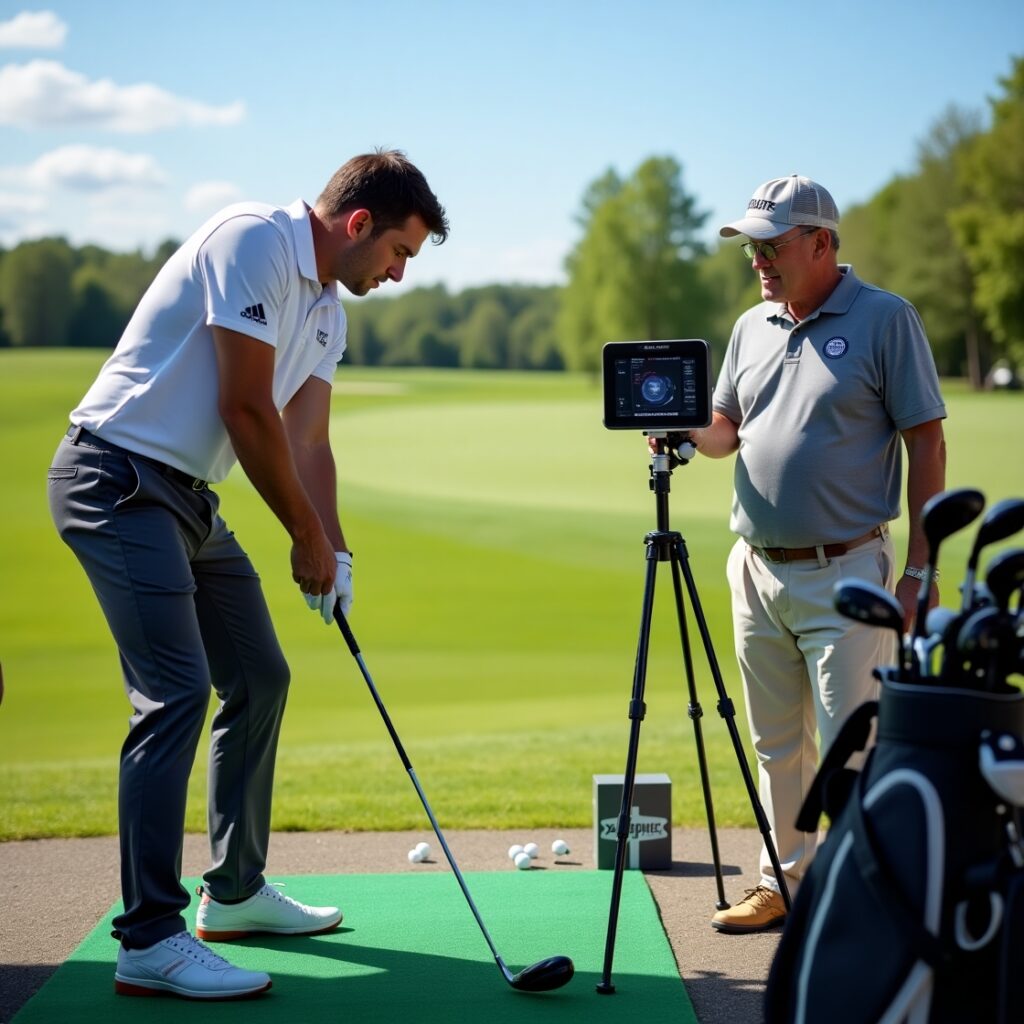
As players, our choices can empower us to swing bigger, hit harder and stay in control. Here are some things we look at:
- Shaft flex that matches our swing speed
- Club head design for better launch and control
- Grip style, such as the interlock grip commonly used by Tiger Woods and Brooks
- Training aids and swing trainers, particularly those integrated with instructional apps
- Keeping up with new club tech, such as the Cobra King Speedzone or the new Mizuno Pro 223
Match Shaft Flex to Swing Speed
We fit our shaft flex to the speed at which we want to swing. For many of us with quick swings, a stiffer shaft can increase performance. A more flexible shaft is optimal for slower swings.
We put sticks like the N.S. Pro 850GH S-flex through their paces to find which ones boost our velocity without compromising our tempo. We watch our swing and receive feedback from fitters to tune in our equipment to ensure it plays the way it should.
Consider Club Head Design Impact
Club head design affects ball trajectory and our ability to generate power. We test plenty of heads, a Speedzone or JPX 850, to see what produces the best combination of distance and control.
Just like a basketball team records all their shots to identify what scoring strategies are most effective, we’re constantly monitoring emerging technology to find any advantage we can find.
Why Proper Fitting Boosts Distance
Professional club fitting ensures the clubs we choose are tailored to our individual swing. When we get this fit correct, our shots tend to fly straighter and longer.
We monitor our statistics in the months after each fitting to determine if we’re making more powerful shots. Getting each fitting provides us detailed advice on how to adjust our rig for maximum pop.
Practice Drills for Explosive Speed
Adding more muscle to our golf swing power actually comes down to speed and strength through intelligent drill practice. We use drills that break down the swing into simple moves, so we can train each area well and keep things fresh.
Here are a few drills that help us boost swing speed and power:
- Medicine ball throws for developing quick hip turn and upper body strength.
- Multiple plank holds and Russian twists to stabilize and build endurance in our core.
- Step drills that help us learn how to apply force from the ground through our center.
- “Speed stick” swings, with lighter clubs or sticks in order to promote a faster swing without losing our body mechanics.
- Slow-motion swings followed by full-speed swings to really feel each part of the swing and identify what needs to improve.
We monitor our improvement by measuring clubhead speed and ball distance in every workout. This allows us to identify the most effective drills and continually pushes us to reach for more. Adding variety to drills prevents us from becoming complacent and creates the opportunity to focus on every aspect of the swing.
Design Drills Targeting Power Sources
We developed challenges to attack our biggest power areas—ground thrust and core. Exercises like planks, twists, and medicine ball throws develop a strong foundation.
By incorporating resistance bands or weighted clubs, we increase the difficulty and build the practical strength to match. We write extremely detailed after action reports on the drills that give us the most difficulty.
After each run, we make them better by tweaking them to how we’re feeling.
Focus Practice on Correcting Flaws
We analyze our swing for areas of weakness, such as lack of hip rotation or lagging arms. Targeted practice, video review, and consistent adjustments are how we repair those.
With high-speed slow-motion video, we can accurately compare swings side by side over time and detect true tangible improvement.
Use Training Aids Wisely
We experiment with promising new tools —heavy clubs, resistance bands, swing trainers. We combine them into a full dynamic warm-up and activation routine rather than using them in isolation.
Quite importantly, we track our progress to make sure they are working.
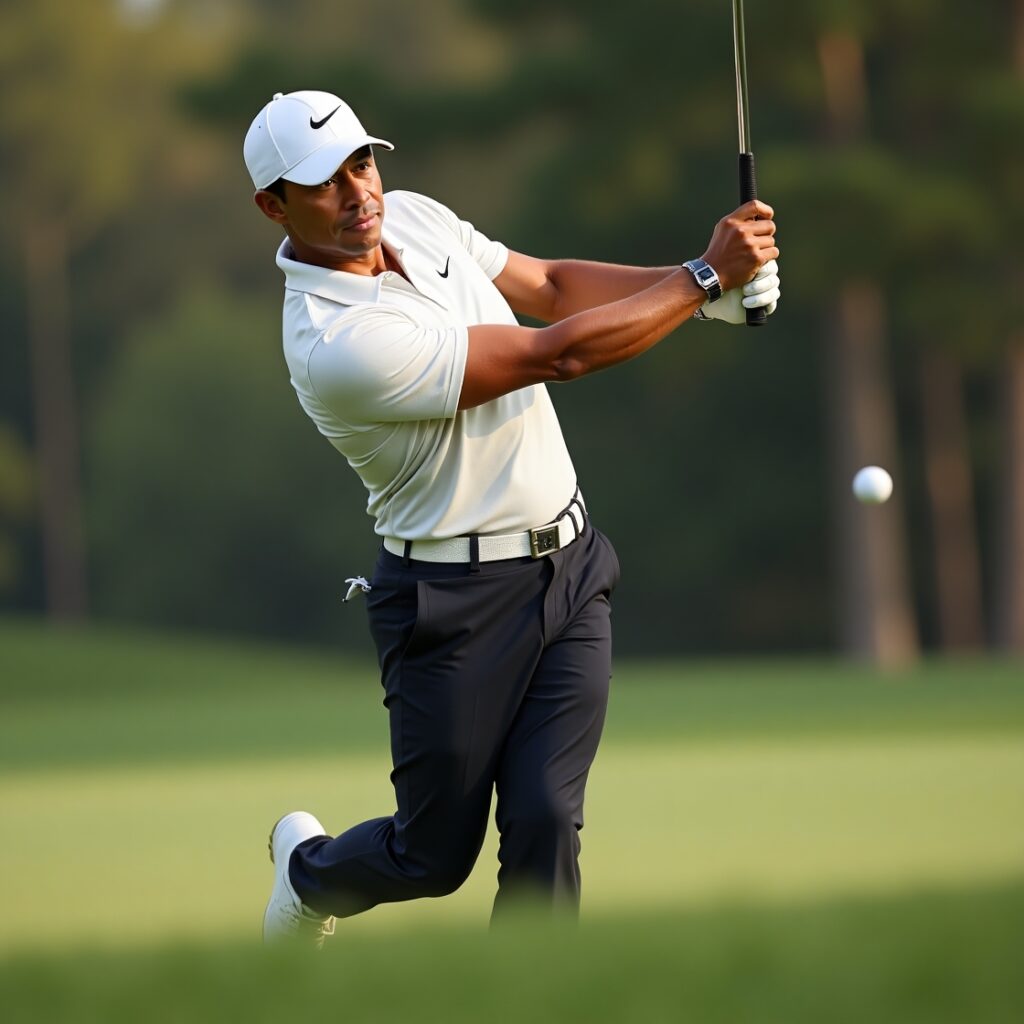
Avoid These Common Power Killers
A lot of golfers have a hard time added distance to their swings due to minor yet correctable errors. When we scrutinize the work, we find a few frequent missteps that sink our range and bring down our impact.
While these habits do create some challenges in playing our best, we are able to correct them as soon as we identify them.
- Poor sequencing of hips, shoulders, and arms
- Weak or too tight grip
- Poor alignment with the target
- Swaying or sliding the hips
- Rolling the club face on the backswing
- Trying to muscle the ball
- Not keeping the club face square through impact
Identify Swing Flaws Hurting Distance
We monitor our swings like hawks for deficiencies that rob power. For instance, swinging too far to the right tends to cause us to swing over the top, and this robs us of distance.
By rolling the club face open on the take away, the face will close down thereby losing power. To identify these bad habits, we look at slow-motion video or have a coach identify them.
Regressive drills, such as holding our club face perpendicular to the ball longer, allow us to mend these deficiencies. We keep track of who’s improving each week so we can identify if it’s starting to rain.
Correct Poor Sequencing Habits
When we sway or slide our hips side to side, rotation is impossible, and thus, a power killer. This is extremely common, particularly for inflexible golfers.
An estimated 70% of us who suffer from tight hips end up over-swaying to compensate. We implement things like putting a club under our trail foot or lifting our lead heel to create a perception of forcing rotation.
Watching our swings or getting feedback keeps us on track.
Stop Trying to Muscle the Ball
It’s all about fluid motions, not muscle power. Calm, deliberate movements produce more and safer quickness and force.
Drills that put the brakes on our swings allow us to experience the sequence and prevent us from trying to muscle it. We’ve learned that keeping things chill, easygoing, and super fun brings out the BEST in us.
Conclusion
We only achieve real increases on the course if we’re able to dramatically improve our potential swing power. Solid setup, engaged midsection and specific resistance-based exercises allow us to move the ball further without extra effort or stress. In fact, changing out the right driver or adjusting our grip can make up a significant advantage. I like to keep an eye out for those little mistakes that are wasting our power and address them immediately. Each round teaches us what’s effective and how we can continue to advocate for more. Repetition rounds out our mechanics and produces more juice down the fairway. To continue improving our game, we stay true to the fundamentals, stay relaxed, and try out fresh tricks. We get out there, swing for the fences, and see our big drives carry huge distances. Want to watch your numbers increase? Try these simple moves next time you’re on the course.
Frequently Asked Questions
How can I generate more power in my golf swing?
Work on having a solid stance and grip pressure while activating your core. Engage your hips and legs to power your swing, as proper wrist positions enhance your effortless power and ball flight.
What role does core strength play in golf swing power?
Again, core strength is absolutely essential for a good golf swing. It helps stabilize your entire body while transferring energy from your lower body up through your arms, enhancing grip strength and increasing clubhead speed.
Are there specific drills to increase swing power?
Yes. For example, medicine ball throw and explosive resistance band swing exercises are great tips for developing wrist mechanics. Through repetition, these drills help cultivate a smooth golf swing with effortless power and muscle memory for a significantly faster, more powerful swing.
Does golf equipment affect swing power?
You're completely right about that. The correct shaft flex for your swing speed and the proper wrist positions will maximize distance. Consult a golf pro for actionable tips. Custom fitting will ensure your equipment harnesses your swing's effortless power.
What common mistakes reduce swing power?
Bad posture and weak grip can zap power in your golf game. Focus on proper wrist positions and techniques to generate effortless power without misusing your upper body.
How important is flexibility for a powerful golf swing?
Flexibility is crucial for achieving a good golf swing, as it promotes a greater turn and complete follow-through, leading to effortless power and longer drives.
Can strength training help improve my golf swing power?
Indeed, resistance training—particularly with a focus on your lower body, core, and back to build up power and balance—will enhance your grip strength and lead to a smoother golf swing power.






